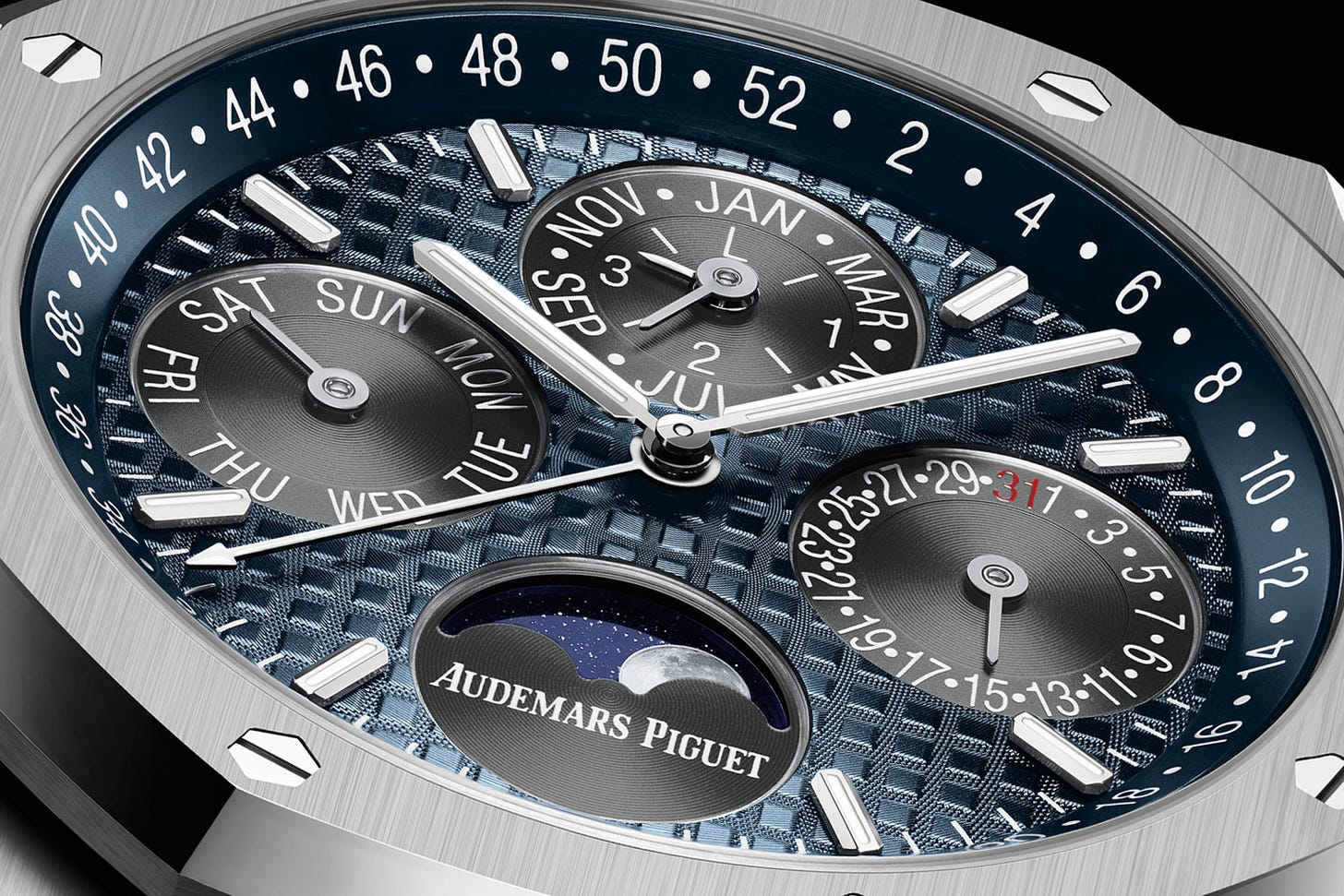The Watch Collector's Matrix
A watch collector's version of the Eisenhower Matrix, to better understand how to separate the urgent from the important, and improve your decision-making.
Do you sometimes feel like you spend all your time putting out proverbial fires in your life? At the end of the day do you feel completely sapped and drained of energy, and yet can’t point to anything of real significance which you accomplished that day?
Yes?
Well, you are probably confusing the urgent with the important!
In terms of watch purchase decisions, people tend to have similar problems - where ‘importance’ is replaced with ‘desire’. Let’s be honest; the purchase of a luxury watch is almost never important. First, let’s explore the Eisenhower Matrix, then move on to the Watch Collector's version of a similar matrix which hopefully helps with future purchase decisions.
The Eisenhower Matrix
Dwight D. Eisenhower - a five-star general during World War 2 and 34th president of the United States - was, by most accounts, a productive man. During his two terms as the US president, he led the construction of the Interstate Highway System, created NASA1, signed into law the first major piece of civil rights legislation2 since the end of the US Civil War3, ended the Korean War4, welcomed Alaska5 and Hawaii6 into the union, and managed to keep fighting the Cold War with Russia while reducing military spending by a third compared to President Truman before him7.

How was Eisenhower able to accomplish so much? He understood the fundamental difference between the Urgent and the Important.
In a 1954 speech, Eisenhower quoted an unnamed university president who said, “I have two kinds of problems, the urgent and the important. The urgent are not important, and the important are never urgent.”8
Over 3 decades later, in his best-selling book The 7 Habits of Highly Effective People, Stephen Covey repackaged Eisenhower’s insights into a simple tool to prioritise tasks; this is now referred to as the Eisenhower Matrix9. This framework for prioritisation helps you combat the “mere-urgency” effect, eliminate time-wasters in your life, and create more mental space to make progress on your goals.
Source Link: https://todoist.com/productivity-methods/eisenhower-matrix
The Watch Collector's Matrix
I just made this up - if a similar model exists out there already, then feel free to let me know and I will be happy to link to it as well. Admittedly this is far from being groundbreaking… but for some who prefer a data-driven approach to decision-making, this could be a handy guide:
The contents of this table may seem trivial and obvious at first glance, but I assure you; undertaking this exercise for yourself will definitely help improve the focus of your spending, and prevent poor decision making. The one condition is: be honest with yourself, and stick to the script.
When you’re staring at a blank table of watches and assigning a score to each one, you force your brain to perform calculations which it rarely has a chance to do, without distraction. When you see it in front of you in black and white, you begin to trigger questions which might be the watch-equivalent of ‘existential’! Try it, I will explain how.
Start by creating a simple list in Excel… Every single watch you think you may want. Feel free to add watches liberally. You always wanted a Speedy, but never got around to it? Cool, add it. You saw the new Rexhep watch, and it is the best thing you have ever laid eyes on? It’s there! You were amazed by Hairspring watches recent Haldimann find? Bang it on the list. You are secretly Hublot-curious? Fine, this is your private list after all.
Now, add your own collection of watches to the list. This will become relevant later on.
Brief setup guide
Note: This section is mostly about setting up your chart in Excel, and some short steps for folks who don’t use Excel much. Skip this section if you already know this stuff.
Once you have the list, you will need to give each watch a score. This is the most challenging part. Don’t worry about the relative scoring, because you ca come back to this later after you see them all on a chart together. Initially, you should end up with a list like this:
I was scrolling on Instagram to figure out what to include on my generic list - I purposely excluded the Swatch/Blancpain, because that left room for a Hublot, which is of course an opportunity I couldn’t not take!
Once you have a table as shown above, you’ll want to add a chart. Select the both columns containing numbers, and add a scatter chart in Excel (via the ‘Insert’ menu tab at the top):
At this point, you will have your data on a chart, but the labels will not be applied. To do this, you right click on the dots within your chart, and select ‘add data labels’. After the numbers appear, right click on the numbers and select ‘format data labels’. Then click on the checkbox, ‘value from cells’ to pull up the following dialogue:
Then you will simply select the list of watch names from your original list, and you’re good to go. You can fiddle around with some of the formatting, add colours or axis titles… and you will end up with something like the chart show below.
Ok, now you are set up, let’s continue…
From this point on, when any new watch captures your interest, place it into the matrix and score it - then see it represented on this chart, relative to all the watches which are already there.
I assure you, this will trigger thoughts in your mind which you would not otherwise have taken the time to explore.
Top right: Buy or pursue exclusively
Top left: Wait to buy
Bottom right: Decide whether you can do without, or whether you can justify raising the desirability to move it up
Bottom left: Avoid, but leave them there in the matrix for future scoring, and as a reminder of things you have successfully avoided.
This is based on completely subjective scoring, and that is because this is your own opinion, and you will be spending your own money.
My friend Brett maintains a spreadsheet of watches on his radar, and although I have not seen it, I think there is one thing which he does for sure - a relative ranking of all the watches on his radar. That is important to remember of course - the matrix will comprise of watches which are on your own radar, and the scoring is not based on anything other than your own view.
For example, it might be true that in an Instagram poll of 100,000 watch collectors, they would potentially rank a Dufour Duality to be more desirable than, say, an AP perpetual calendar. However, if you have loved AP since you were 4 years old, and to you, the single most desirable thing after the air your breathe is an AP perpetual calendar - that is totally fine, and you ought to be ranking them in your matrix accordingly. Remember, this is about you and your preferences.
The ranking of desire is fairly straightforward, and it is important to remain strict when it comes to scoring - you will be doing yourself a disservice if you separate your ultimate grail from a random beater watch by only 2 points - check it, and re-check it, and most importantly be honest with yourself. As you look at the finished graph, the relative ranking of each watch on the chart should make sense to you. If something doesn’t feel right, it probably isn’t right.
Do not ask for anyone’s help. Solve any contradictions by questioning yourself.
The ranking of urgency can perhaps be a bit trickier. For example, the watch could be a limited edition which is soon to be sold out; it could be a timed release which will not be sold after a few months (or 10 minutes!); it could be a watch which you know is currently still within your price range but is quickly getting hyped and might not be attainable if you wait too long; or, it could simply be a random call from an authorised dealer to purchase a highly sought after piece which you would not ordinarily be able to purchase!
Of course, there is no way to conclusively rank the aforementioned things, but do not forget, it ought to be true that the most urgent is your current object of desire - the watch which you cannot stop thinking about, the one which you could buy subject to its affordability and availability, and the one which you want NOW.
Now, do you remember the suggestion to add your own collection of watches to this list? This is helpful because it might be true that you can't afford something you want now, without selling other watches in your current collection. Now that this data is laid out in front of you, adding your current collection to the matrix (at least in terms of desirability) will also help you decide what to sell, if anything. If the current collection still remains in the top right, you know they aren’t going anywhere.
Tastes change. Lifestyles change. Unless you have unlimited access to money, it behooves any rational collector to consider the relevance of pieces which are no longer enjoyed.
In closing, I would say the block to be most wary of is the bottom-left, because this is the one where so many people waste resources and wrist-time buying and wearing unnecessary watches, just because of some fad or trend. Indeed, it is not a criticism of any particular watch, but rather of the mindset with which people approach these purchases. In any given year, you get to pick a watch 365 times: once each morning.
Do you really want to waste any particular day wearing something you don't actually like, or perhaps picking something simply because “it hasn’t received enough wrist-time recently”? Why bother? If you don't really want to wear it, don't! If you don't need to sell it, then don't do that either - but it is better to avoid building up a collection of 'worn-once-in-a-while' watches because you will surprise yourself with how the small sums add up over time. In order to avoid these unnecessary purchases, make sure they are on your list if they deserve to be, and then be disciplined about avoiding them entirely. Each time you think about a purchase, and revisit the chart you’ve created - you will automatically realise how close you’re coming to making a stupid decision.
Then… just don’t!
If you enjoyed this post, please do me the HUGE favor of simply clicking the LIKE button below, thanks!
On September 9, 1957, President Eisenhower signed the Civil Rights Act of 1957 into law, the first major civil rights legislation since Reconstruction. It allowed federal prosecution of anyone who tried to prevent someone from voting. It also created a commission to investigate voter fraud.
Reconstruction - Civil War End, Changes & Act of 1867
Acting on a campaign pledge, President-elect Dwight D. Eisenhower went to Korea on December 2, 1952. Eisenhower concluded, “we could not stand forever on a static front and continue to accept casualties without any visible results. Small attacks on small hills would not end this war.” On July 27, 1953, seven months after President Eisenhower's inauguration as the 34th President of the US, an armistice was signed, ending organized combat operations and leaving the Korean Peninsula divided much as it had been since the close of World War II at the 38th parallel. (eisenhowerlibrary.gov)
Alaska Statehood | Eisenhower Presidential Library (eisenhowerlibrary.gov)
Hawaii Statehood | Eisenhower Presidential Library (eisenhowerlibrary.gov)
Probably more to do with Truman’s policies being way more aggressive (and therefore expensive), than it had to do with Eisenhower being specifically tactical about spending.
What Is Important Is Seldom Urgent and What Is Urgent Is Seldom Important – Quote Investigator
Also known as The Time Management Matrix, The Eisenhower Box, The Eisenhower Method, and The Urgent-Important Matrix











Interesting matrix
Loved your matrix. I enjoy reading your posts.